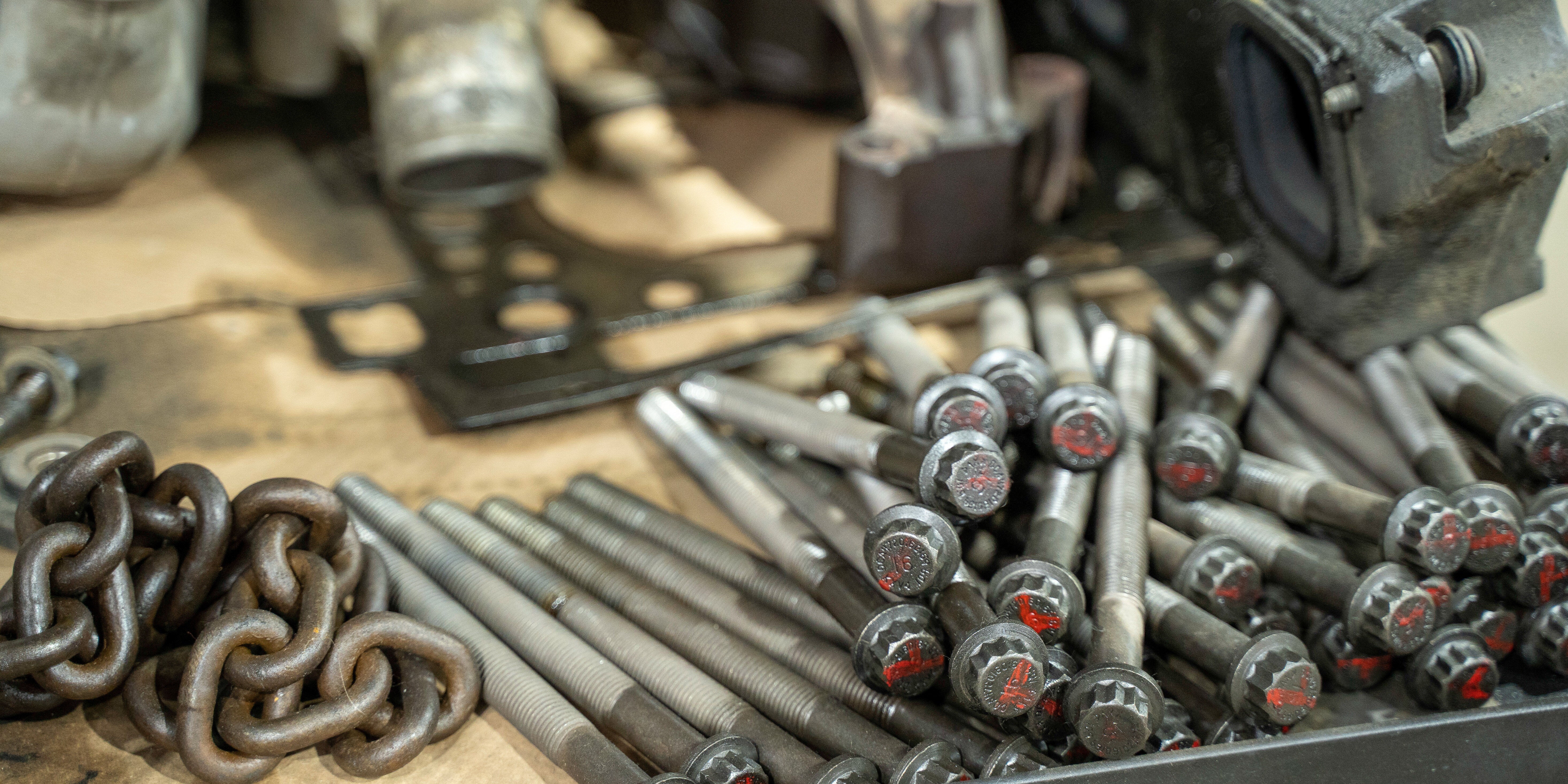
How to Address Performance Issues and Conflict in Your Heavy-Duty Repair Shop
Running a heavy-duty repair shop isn't just about turning wrenches - it’s about managing people. And let’s be honest: that’s often the hardest part. Whether it’s a technician falling behind on jobs, a team clash over who gets the “easy work,” or someone poisoning morale with a bad attitude, unresolved personnel issues can drag your whole operation down.
This post is your practical guide to handling performance problems and conflict in your diesel, truck, or fleet repair shop - fairly, professionally, and in a way that actually makes your business stronger. We’ll also show how modern shop management software like ShopView can help you stay on top of these challenges with less stress and more clarity.
Spot Performance Problems Early - With Data, Not Guesswork
Too often, underperformance goes unaddressed until it causes real damage. But vague impressions like “he seems slow” won’t cut it - you need clear, objective data.
Start by evaluating tech performance using real criteria:
- Job efficiency (hours billed vs. clocked)
- Quality (comebacks, rework)
- Customer satisfaction
- Teamwork and attitude
- Adaptability and training progress
Modern platforms like ShopView log this data automatically, helping you see who’s on track and who might need support. It turns guesswork into insight - and gives you leverage to take action without coming off as unfair or biased.
But don’t stop at the numbers. Look for root causes behind the dip in performance. Is it a lack of training? Motivation? A personal issue? Or maybe they’re not getting clear instructions. When you diagnose the “why,” your fixes are much more likely to work.
Coach First, Fire Later: Build a Culture of Accountability
If a technician’s slipping, your first move isn’t punishment - it’s coaching. Sit them down for a private, respectful conversation. Focus on specifics: “Last three inspections missed brake measurements,” instead of vague gripes like “you’re not doing a good job.”
Then set clear expectations - written ones. Define measurable goals using the SMART framework (Specific, Measurable, Achievable, Relevant, Timely). For example: “Increase first-time fix rate by 10% within 60 days.”
Tie these goals to shop-wide metrics so the tech sees how their improvement benefits the team - maybe even their bonus potential.
And document everything. Every conversation, every goal, every improvement. Not to build a case for firing - but to make sure everyone’s on the same page. Should things escalate later, this documentation also protects your shop legally.
Invest in Training and Mentorship
If the problem is a skills gap, fix it with training. Whether it’s an online course, OEM certification, or pairing with a senior tech, upskilling a known worker is almost always cheaper (and faster) than hiring a new one. Plus, it builds loyalty and reduces mistakes.
Weekly or bi-weekly check-ins go a long way, too. Not formal reviews - just quick progress chats. These micro-touchpoints show you’re invested in the tech’s growth, not looking to catch them slipping.
Pro tip: Celebrate small wins. A shoutout in the morning toolbox meeting or a quick “Nice job on that engine swap” text keeps morale up and builds momentum.
Want to learn more about ongoing tech training? Check out our post on Training Technicians to Use Shop Software.
Tackle Shop Floor Conflict Before It Burns Down the Bay
Diesel shops run hot - literally and emotionally. When conflict erupts, don’t ignore it. A toxic tech or ongoing dispute can drive out good employees and kill productivity fast.
Here’s how to handle it:
- De-escalate immediately. If things are heated, step in and separate the parties. Don’t let it explode in front of customers.
- Listen individually. Let each person air their side. Often, feeling heard is half the battle.
- Bring them together with ground rules. Respectful discussion. No interrupting. Focus on solutions.
- Look for misunderstandings. A lot of shop beef comes from assumptions: “He always gets the easy jobs,” “She never helps clean up.” Often, the reality doesn’t match the story - and data from tools like ShopView can clear that up.
- Set team-wide behavioral standards. If you don’t have a shop rules doc, make one. It can be simple: “Treat each other with respect. No harassment. Bring issues to management, not the floor.”
And don’t forget the power of team-building. Whether it’s a Friday BBQ, a tool giveaway contest, or a “who’s the fastest PM tech” competition, a bit of camaraderie can cool a lot of fires.
When Coaching Isn’t Enough: Progressive Discipline the Right Way
Sometimes, despite your best efforts, a tech doesn’t turn it around. That’s when a formal, fair, and consistent discipline process protects your team and your business.
Use the progressive discipline model:
- Verbal warning (documented)
- Written warning (signed)
- Final warning or suspension
- Termination
Even in at-will states, this approach protects you from wrongful termination claims and gives the employee every fair chance to improve. If they don’t, it’s time to cut ties - for the good of your team and your shop’s reputation.
Red flags it’s time to let someone go:
- Repeat mistakes despite retraining
- Negative influence on team morale
- Disrespect or refusal to improve
- Customer complaints
- Legal or safety risks
Always terminate respectfully and with a witness. Follow local laws on final pay and tool return. And if you’re unsure, consult an HR pro or legal advisor before acting.
Use Shop Management Software to Eliminate Surprises
Here’s the kicker: Most of these problems - performance issues, miscommunication, team conflict - get worse when your shop runs on paper, whiteboards, or old-school systems.
ShopView changes the game. It gives you:
- Real-time performance dashboards: Track jobs completed, hours billed, comebacks, and more - by tech.
- Digital scheduling tools: Balance workloads and avoid overbooking.
- Inventory tracking: No more techs fighting over missing parts.
- Compliance tools: Eliminate paperwork bottlenecks with DVIRs, IFTA logs, and more built into your workflow.
- Fleet telematics integration: Work orders auto-generate from fault codes.
- Multi-location management: Standardize processes across all shops with full visibility.
Curious how ShopView makes all this easy? Book a free demo and see it in action.
Real shops using ShopView report:
- $100K+ in recovered billables annually
- 20% revenue growth
- 1.5 hours saved per tech, per day
- Fewer comebacks and missed jobs
- Stronger team morale
That’s not hype - it’s ROI you can take to the bank.
Final Thoughts: Don’t Let People Problems Stall Your Shop
Performance issues and team drama aren’t just HR problems. They’re profit problems. And in a tight labor market, you can’t afford to let underperformance drag down your whole operation - or drive good employees away.
But when you coach your team effectively, handle conflict early, and back it all with real data, you create a repair shop that runs smoother, faster, and more profitably. And when you add a platform like ShopView to the mix, you eliminate the guesswork - turning tough conversations into clear, confident decisions.
Need help implementing what you’ve just read? Let us show you how ShopView can make it all easier, faster, and more profitable - starting today.
.png?width=1500&height=1500&name=11%20(1).png)








.png?width=1500&height=1500&name=1%20(1).png)

%20-%20Copy.png?width=1500&height=1500&name=2%20(1)%20-%20Copy.png)



